The circle of fifths is an essential concept in music theory, helping musicians understand key signatures, chord progressions, and harmonic structures. Whether you're a beginner or an experienced composer, learning how to use the circle of fifths—especially when working with music notation software—can improve your composition process.
In this guide, you'll learn:
🎵 What the circle of fifths is and how it works
🎵 How to use it to identify key signatures and chords
🎵 How to apply it in your music using music notation software

What is the circle of fifths?
As the name suggests, the circle of fifths is a circular diagram that represents the relationship between fifths.
Here’s how it works:
- Start with C and move up by a perfect fifth (7 semitones).
- You reach G → another fifth brings you to D, and so on.
- This cycle continues until you return to C, forming a complete circle.
For a visual example, check out the chart below:
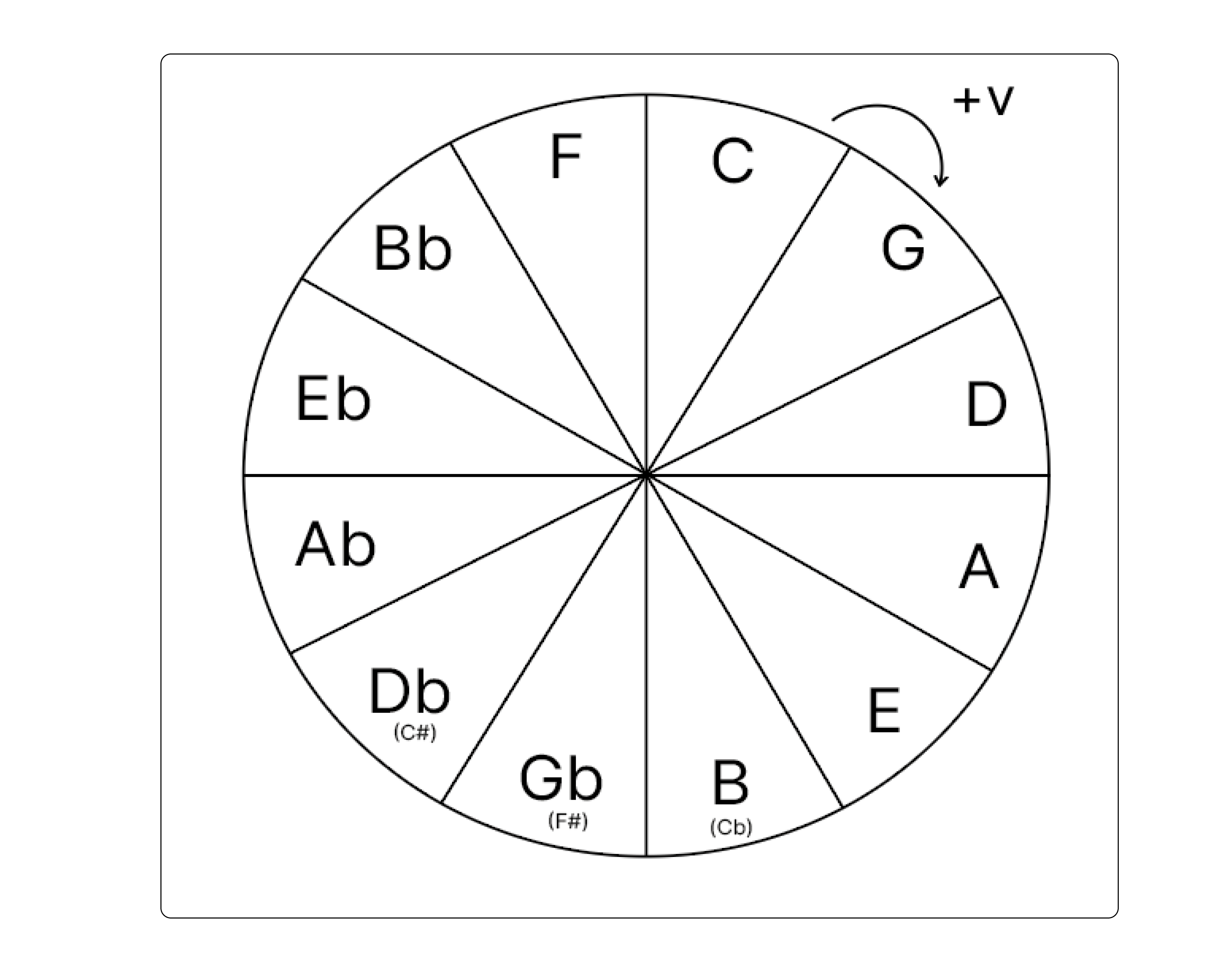
💡 Need a refresher on perfect fifths? Check out our guide on intervals.
🗺️ More Than a Circle—It’s a Map
The circle of fifths works like a musical map, revealing different insights depending on how you interpret it. Today, I’ll share two useful ways to read it, but keep in mind—there are many other ways to explore its structure.
Using the Circle of Fifths to Understand Key Signatures
The circle of fifths is a quick way to determine key signatures. This is how it works:
✔️ Moving clockwise, each step adds a sharp (#)
Example (Sharps):
- C major – No sharps
- G major – 1 sharp (F#)
- D major – 2 sharps (F#, C#)
- A major – 3 sharps (F#, C#, G#)
✔️ Moving counterclockwise, each step adds a flat (♭)
Example (Flats):
- C major – No flats
- F major – 1 flat (Bb)
- Bb major – 2 flats (Bb, Eb)
- Eb major – 3 flats (Bb, Eb, Ab)

To see the symmetry and usefulness of the circle of fifths, check out the images below.
📌 Note: The blue circle highlights the key, while the stars mark the corresponding accidentals. For D major, the accidentals are F# and C#.


Using the Circle of Fifths to Understand Major Key Signatures
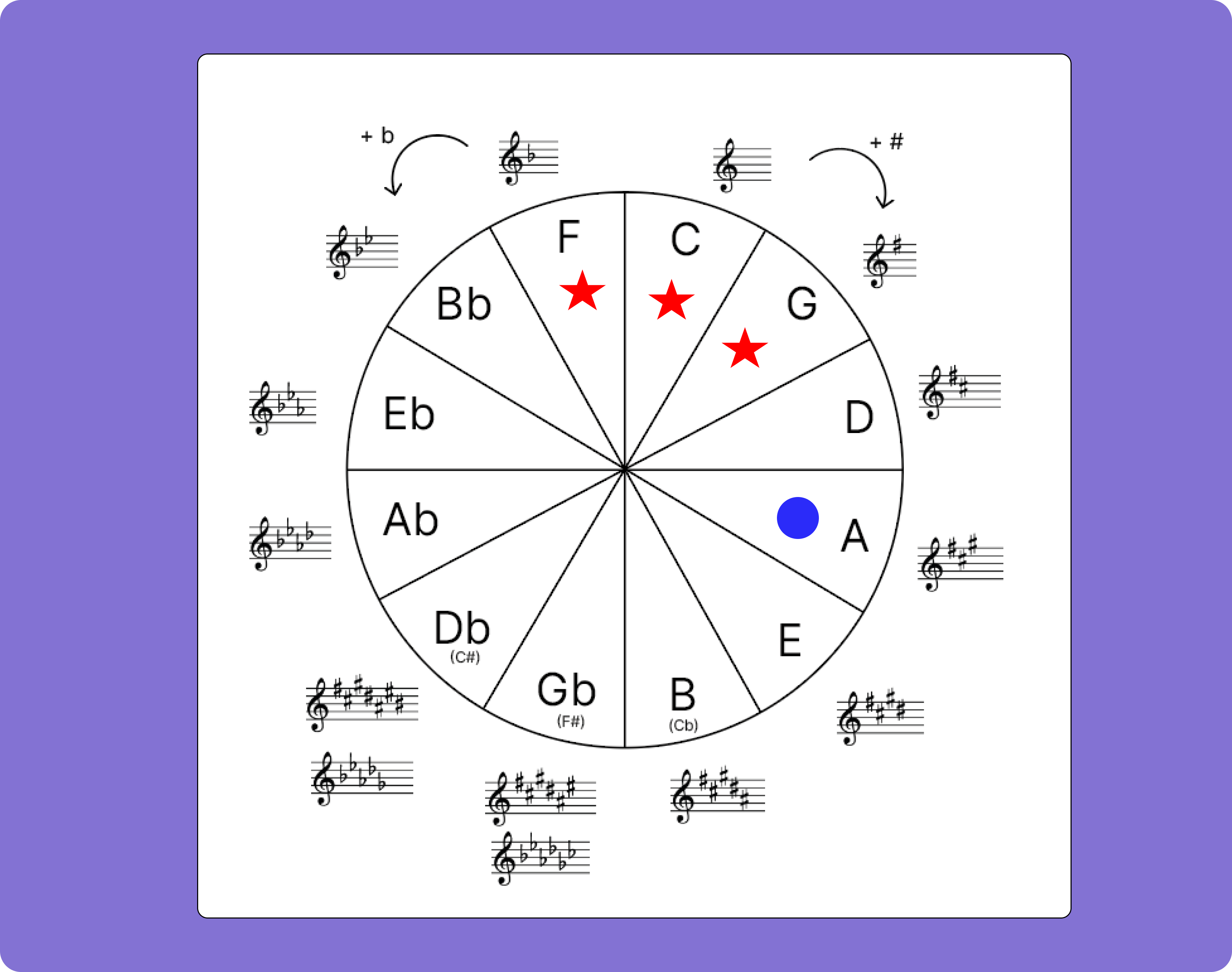
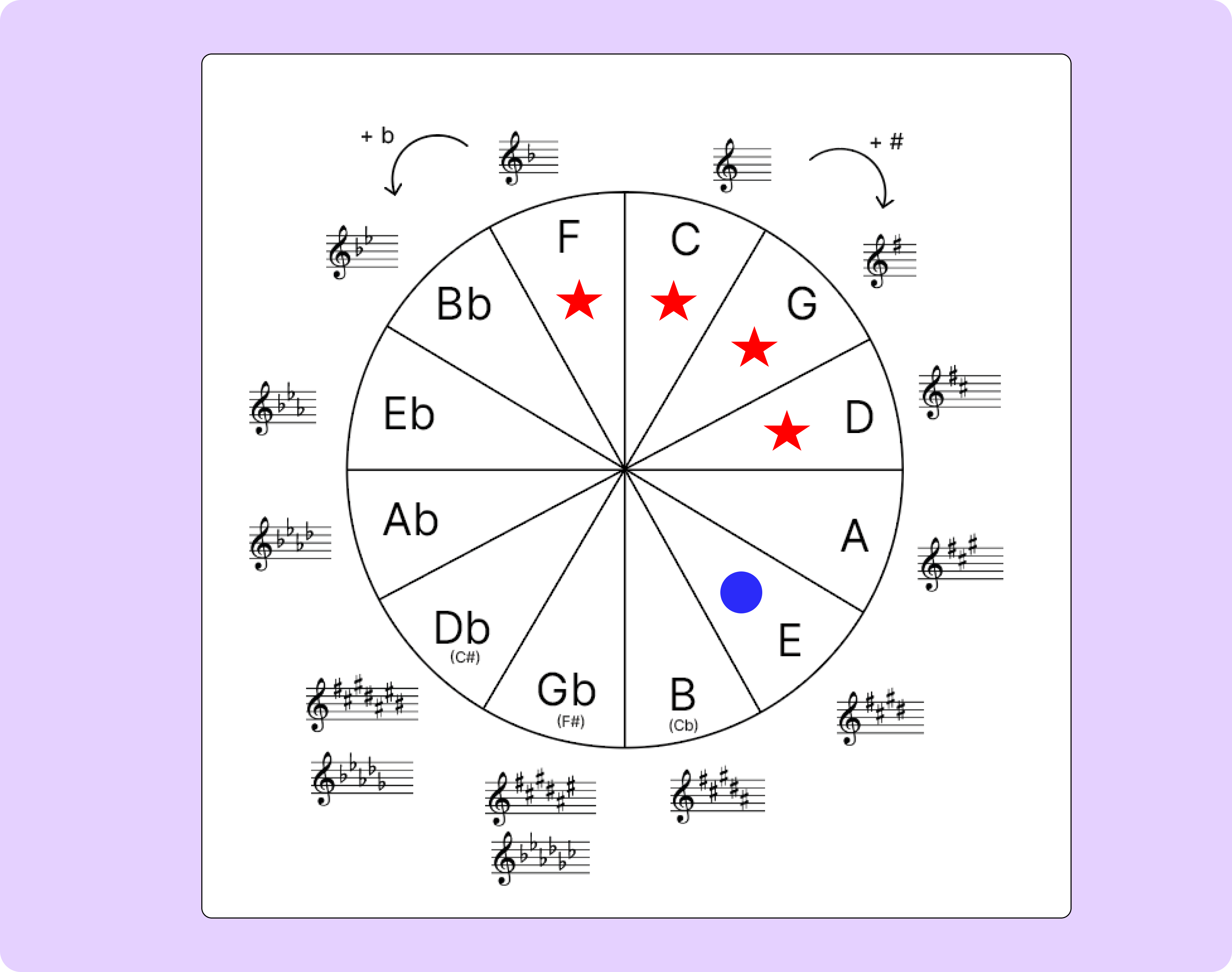
Using the Circle of Fifths to Understand Minor Key Signatures
The same applies to keys with flat accidentals.
📌 Note: The green circle marks the key, while the stars indicate its corresponding alterations.
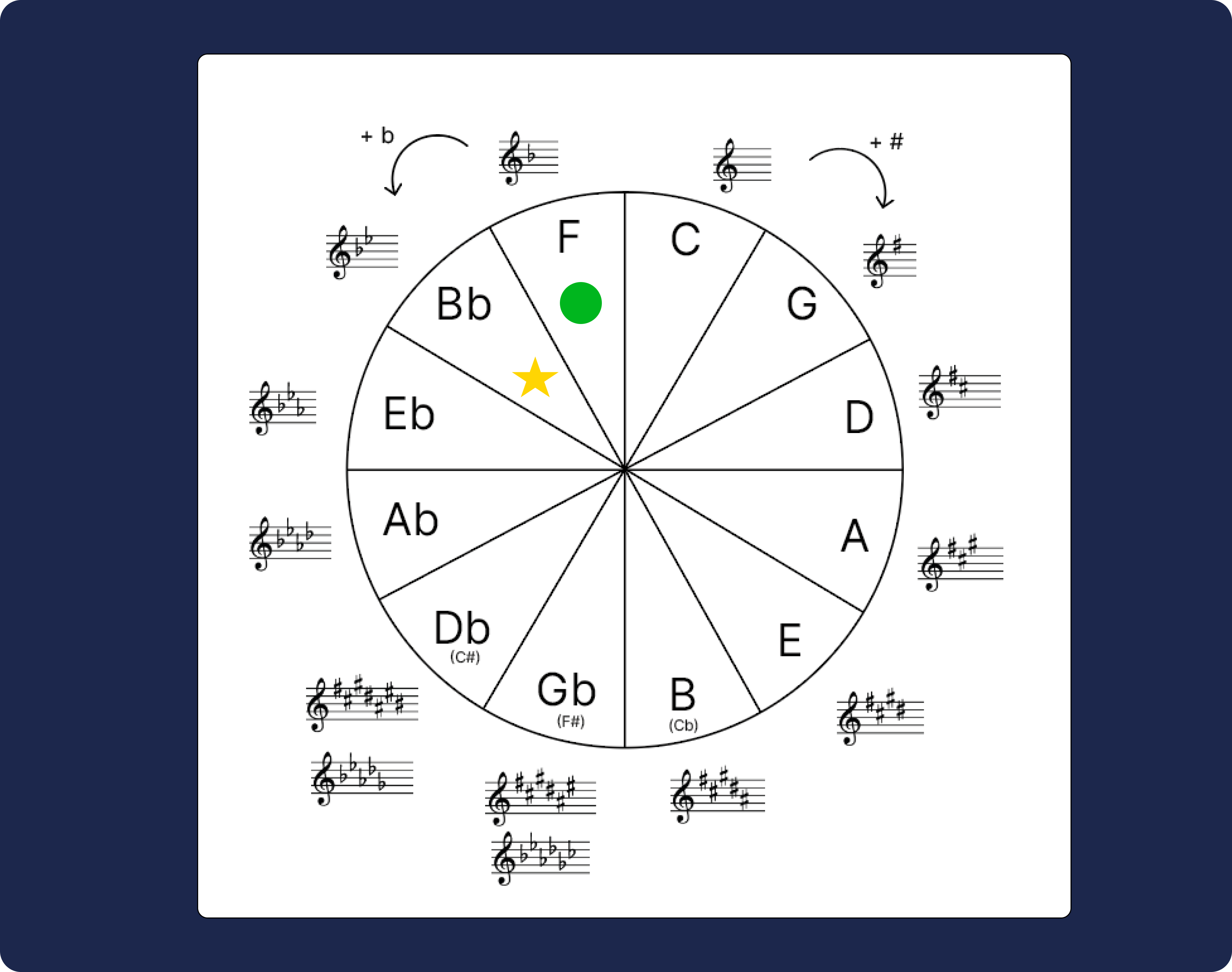

Using the Circle of Fifths to Understand Major Key Signatures with Sharp Alterations
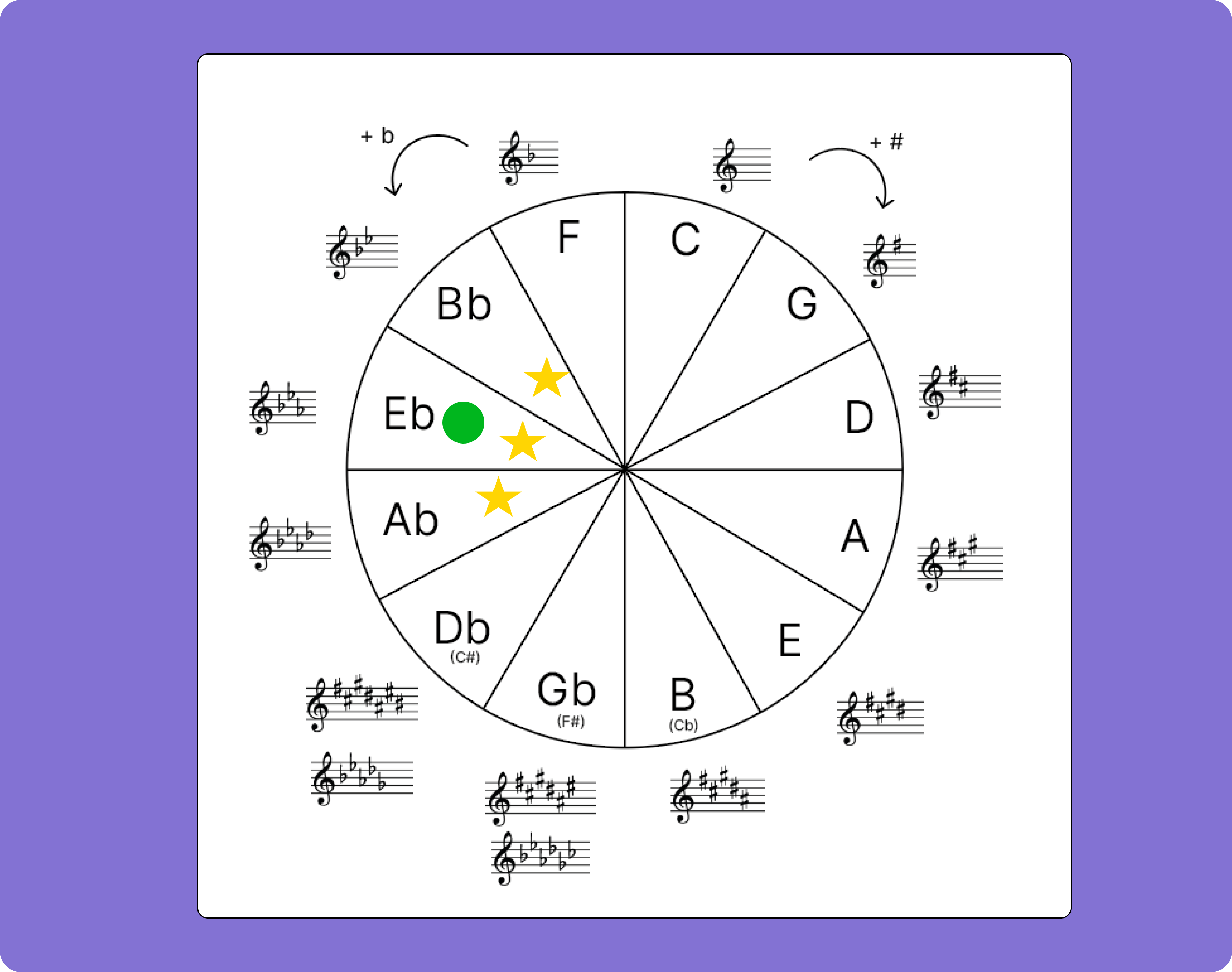
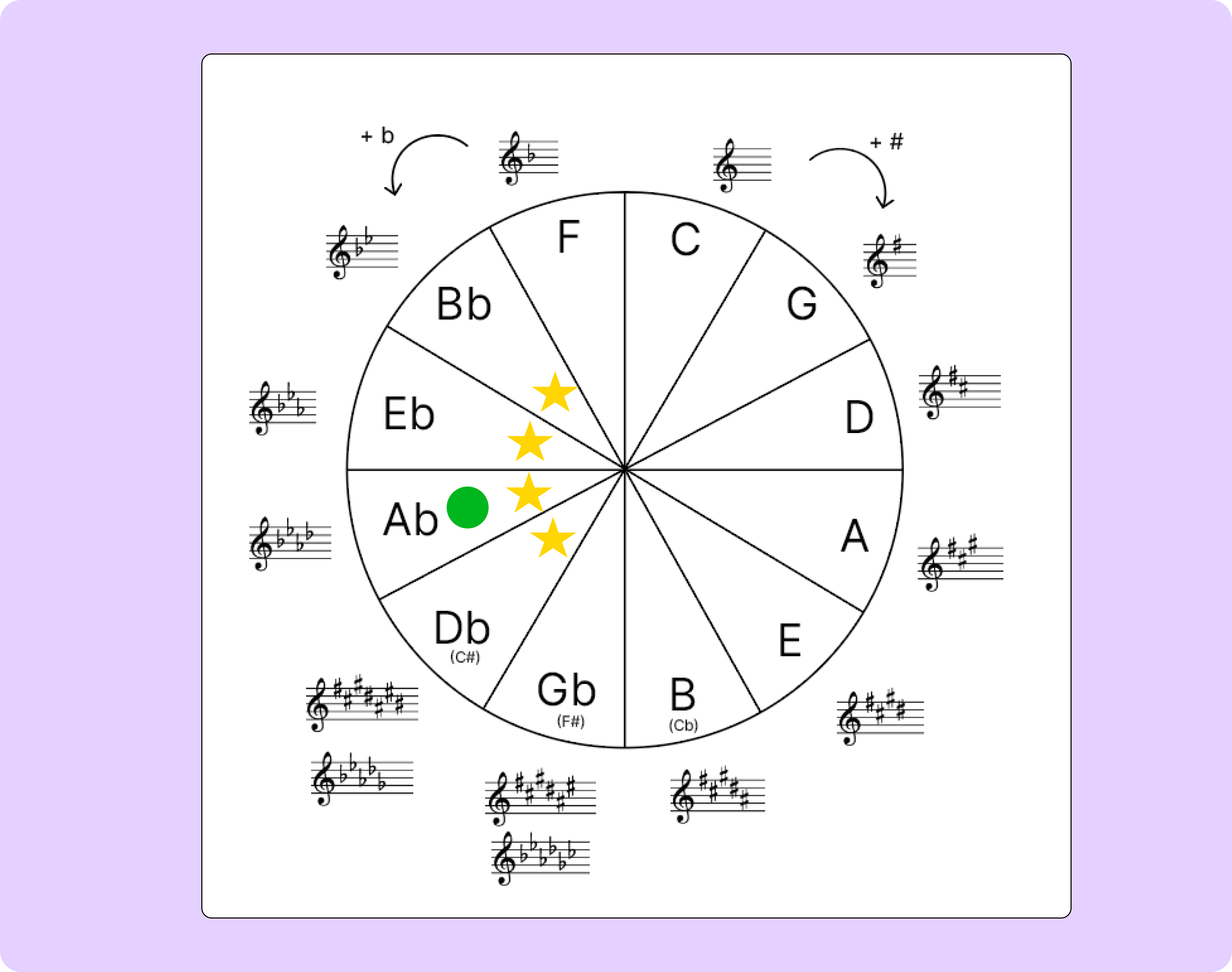
Using the Circle of Fifths to Understand Major Key Signatures with Flat Alterations
A key always has its alterations in the same order. For example, E major always includes F#, C#, G#, and D#—never in a different sequence like F#, G#, C#, D# or C#, D#, F#, G#. This is another way the circle of fifths maintains its structure.
Notice how accidentals follow the same pattern?
✅ Sharp keys add accidentals in ascending fifths.
✅ Flat keys add accidentals in descending fifths.
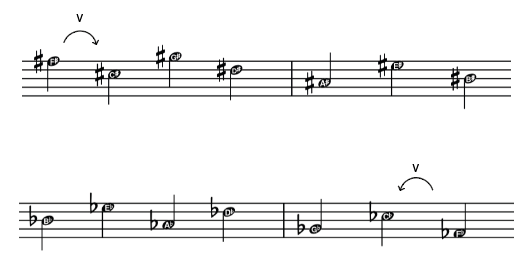
Relative Minor Scales in the Circle of Fifths
Every major scale has a relative minor scale, which shares the same key signature.
For example:
- C major → A minor
- G major → E minor
- D major → B minor
By adding minor scales to the circle of fifths, you can instantly see which minor keys correspond to each major key.

🎵 Why is this useful?
- Helps identify major and minor keys in sheet music.
- Makes transposition easier and faster.
- Improves chord progressions and harmonization.
Using the Circle of Fifths for Chord Progressions
One of the most exciting uses of the circle of fifths is for chord progressions.
The circle of fifths helps you identify which chords belong to each key.
For example, the G major key (or its relative minor, E minor) includes the following chords:
G - Am - Bm - C - D - Em - Fdim
With the circle of fifths, you can easily visualize these relationships. To do this, create a triangle centered on G, then extend an appendix to the minor chord following the triangle. Keep in mind that this appendix represents a diminished chord (dim), not a minor (m) chord.
Check out the image below for a clearer understanding! 😊

Can You See the Pattern?
In the G major key (or its relative minor, E minor), the chords are:
🔹 G major: G - Am - Bm - C - D - Em - Fdim
🔹 E minor: Em - Fdim - G - Am - Bm - C - D
This pattern applies to all keys. Here’s another example:
Example 1: Key of E Major (or its relative, C# Minor)
🔹 E major: E - F#m - G#m - A - B - C#m - D#dim
🔹 C# minor: C#m - D#dim - E - F#m - G#m - A - B
The circle of fifths helps you visualize and apply these relationships effortlessly across different keys.

Example 2: Key of Bb Major (or its Relative, G Minor)
🔹 Bb Major: Bb - Cm - Dm - Eb - F - Gm - Adim
🔹 G Minor: Gm - Adim - Bb - Cm - Dm - Eb - F
The circle of fifths makes it easy to see how these chords are connected, whether you're working in a major key or its relative minor.
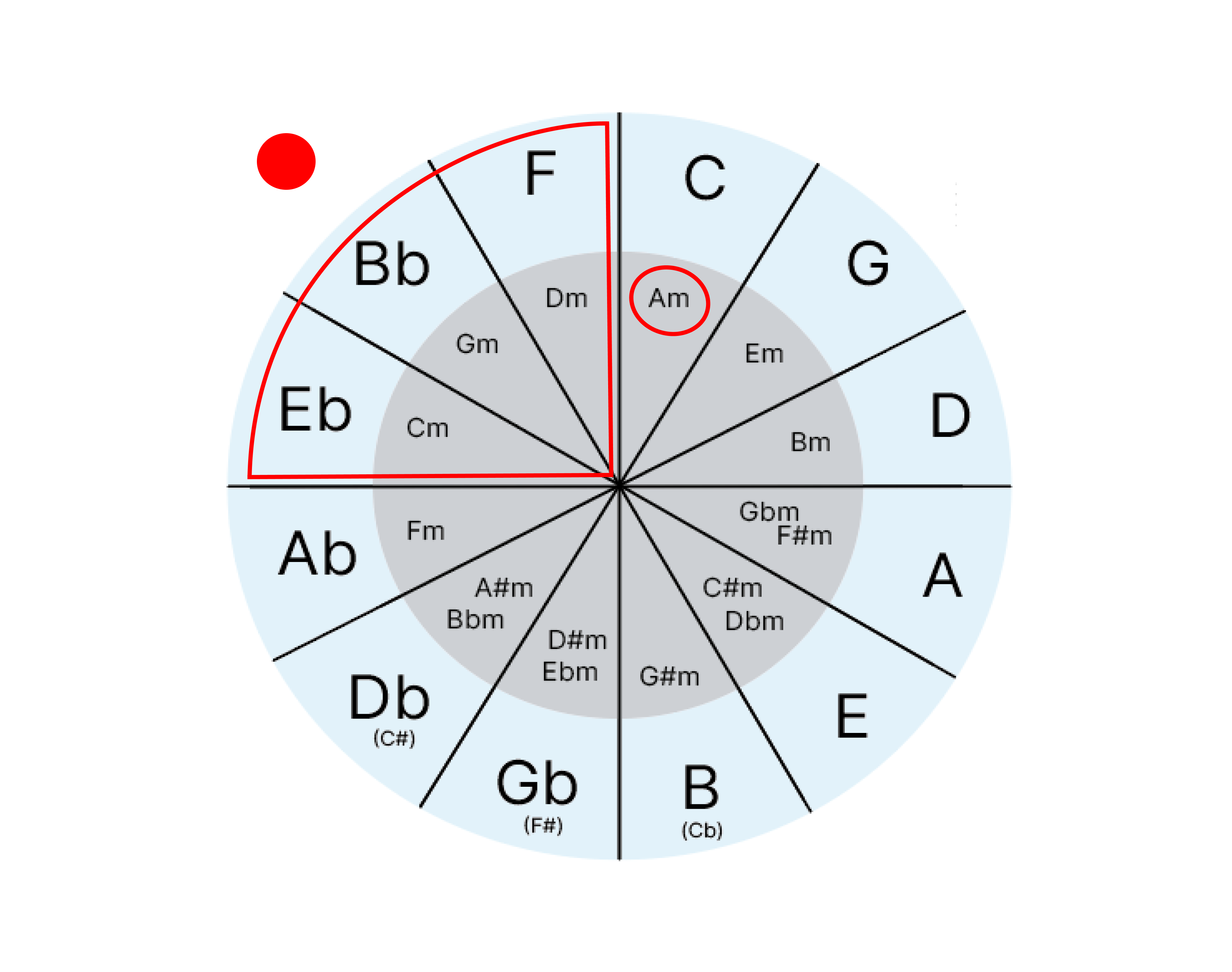
🤩 Isn’t it fascinating?
Conclusion
The circle of fifths is more than just a theory tool—it’s a practical guide for composing, analyzing, and understanding music. From identifying key signatures to building chord progressions, it simplifies complex relationships and enhances creativity.
By applying the circle of fifths in your compositions, you can:
✔️ Navigate key changes with confidence
✔️ Create smoother chord progressions
✔️ Transpose music efficiently

Whether you're composing by hand or using music notation software, this tool will always be valuable.
🎼 Start exploring it today and take your music to the next level!
